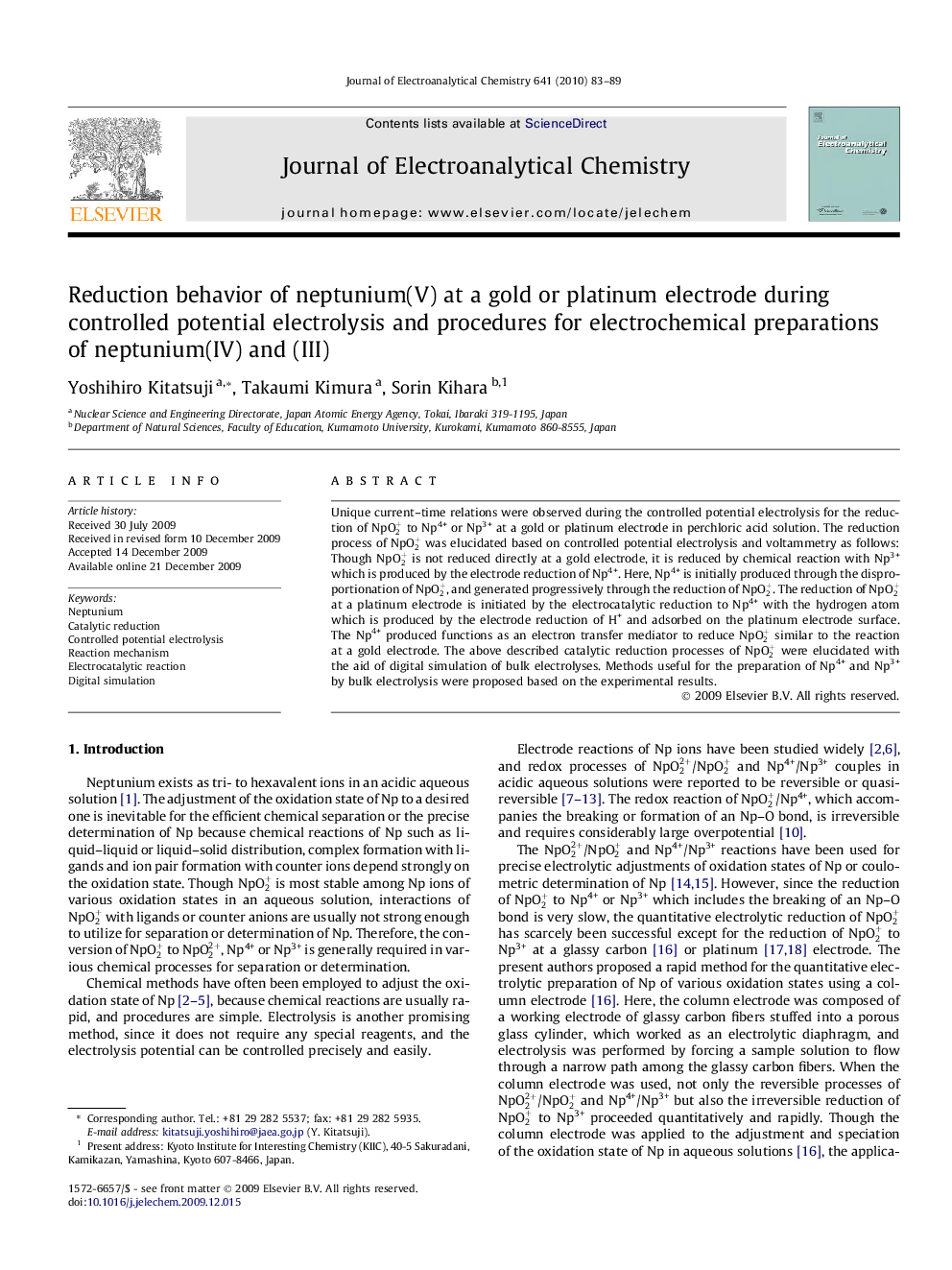| Article ID | Journal | Published Year | Pages | File Type |
|---|---|---|---|---|
| 220081 | Journal of Electroanalytical Chemistry | 2010 | 7 Pages |
Unique current–time relations were observed during the controlled potential electrolysis for the reduction of NpO2+ to Np4+ or Np3+ at a gold or platinum electrode in perchloric acid solution. The reduction process of NpO2+ was elucidated based on controlled potential electrolysis and voltammetry as follows: Though NpO2+ is not reduced directly at a gold electrode, it is reduced by chemical reaction with Np3+ which is produced by the electrode reduction of Np4+. Here, Np4+ is initially produced through the disproportionation of NpO2+, and generated progressively through the reduction of NpO2+. The reduction of NpO2+ at a platinum electrode is initiated by the electrocatalytic reduction to Np4+ with the hydrogen atom which is produced by the electrode reduction of H+ and adsorbed on the platinum electrode surface. The Np4+ produced functions as an electron transfer mediator to reduce NpO2+ similar to the reaction at a gold electrode. The above described catalytic reduction processes of NpO2+ were elucidated with the aid of digital simulation of bulk electrolyses. Methods useful for the preparation of Np4+ and Np3+ by bulk electrolysis were proposed based on the experimental results.
